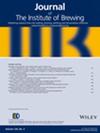Cachaça production: from sugar cane to spirit
IF 2
3区 农林科学
Q3 FOOD SCIENCE & TECHNOLOGY
引用次数: 0
Abstract
Why was the work done: Cachaça, the oldest distilled beverage in the Americas, has great historical and cultural significance. A review of cachaça production is important to preserve tradition, standardise industry processes, promote innovation and quality. This review offers a comprehensive overview of current knowledge and advancements in cachaça production, covering regulation, process control, product quality and future developments. What are the main findings: Thev production of Cachaça works within well defined regulations, with its production encompassing both field and industrial practice. The review focuses on sugar cane cultivation, fermentation, distillation, and ageing in wooden barrels. It underscores the significance of regional factors such as climate, soil, and sugar cane variety in shaping the sensory profile of cachaça. While a range of sugar cane cultivars have been developed and grown in different environments, further research on the adaptation of sugar cane crop is necessary. The fermentation of cachaça is spontaneous utilising the microbiota in the sugar cane juice. However, the use of wild sugar cane yeasts, complemented with commercial strains is increasingly used by producers. With regard to distillation, production of the spirit in copper still pots and ageing in tropical wood barrels remain prevalent in the industry. Why is the work important: This review contributes to ongoing efforts to enhance the quality of cachaça. Whilst the importance of traditional production methods is recognised, this review embraces advancements in technology coupled with insights to future perspectives.卡恰恰(Cachaça)的生产:从甘蔗到烈酒
为什么要开展这项工作:卡恰恰(Cachaça)是美洲最古老的蒸馏饮料,具有重要的历史和文化意义。审查卡恰恰生产对于保护传统、规范行业流程、促进创新和提高质量非常重要。本综述全面概述了当前卡恰恰生产方面的知识和进展,涉及监管、工艺控制、产品质量和未来发展:主要发现:Cachaça 的生产有明确的规定,其生产既包括田间实践,也包括工业实践。审查的重点是甘蔗种植、发酵、蒸馏和木桶陈酿。它强调了气候、土壤和甘蔗品种等地区因素对塑造卡恰恰感官特征的重要性。虽然已经开发出一系列甘蔗栽培品种并在不同环境中种植,但仍有必要进一步研究甘蔗作物的适应性。卡恰恰的发酵是利用甘蔗汁中的微生物群自发进行的。不过,生产商越来越多地使用野生甘蔗酵母,并辅以商业菌株。在蒸馏方面,用铜蒸馏锅生产烈酒和在热带木桶中陈酿仍然是行业的普遍做法。虽然传统生产方法的重要性已得到认可,但本综述还包括技术的进步以及对未来前景的展望。
本文章由计算机程序翻译,如有差异,请以英文原文为准。
求助全文
约1分钟内获得全文
求助全文
来源期刊

Journal of The Institute of Brewing
工程技术-食品科技
CiteScore
6.20
自引率
7.70%
发文量
25
审稿时长
6 months
期刊介绍:
The Journal has been publishing original research for over 125 years relating to brewing, fermentation, distilling, raw materials and by-products. Research ranges from the fundamental to applied and is from universities, research institutes and industry laboratories worldwide.
The scope of the Journal is cereal based beers, wines and spirits. Manuscripts on cider may also be submitted as they have been since 1911.
Manuscripts on fruit based wines and spirits are not within the scope of the Journal of the Institute of Brewing.
 求助内容:
求助内容: 应助结果提醒方式:
应助结果提醒方式:


